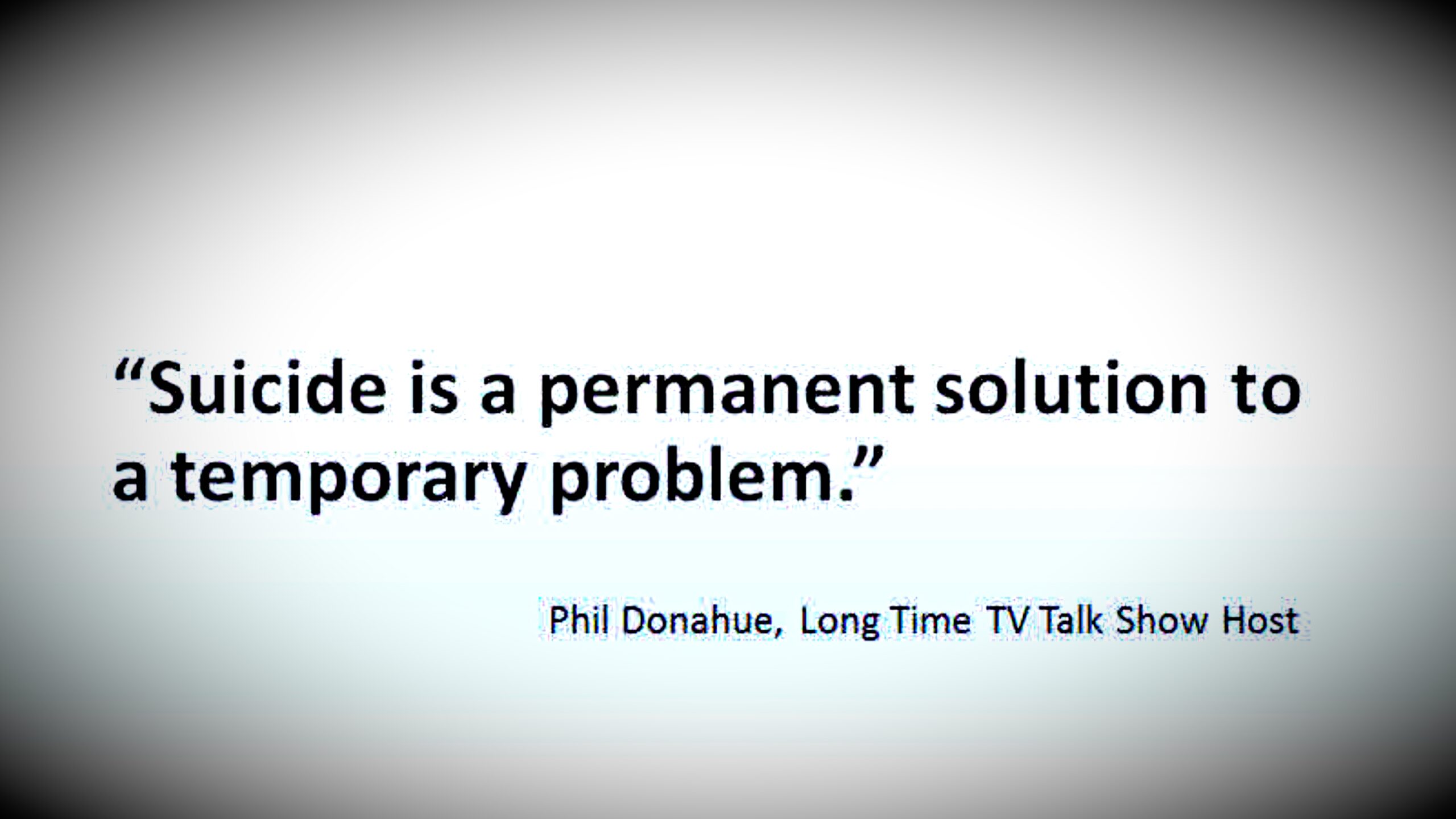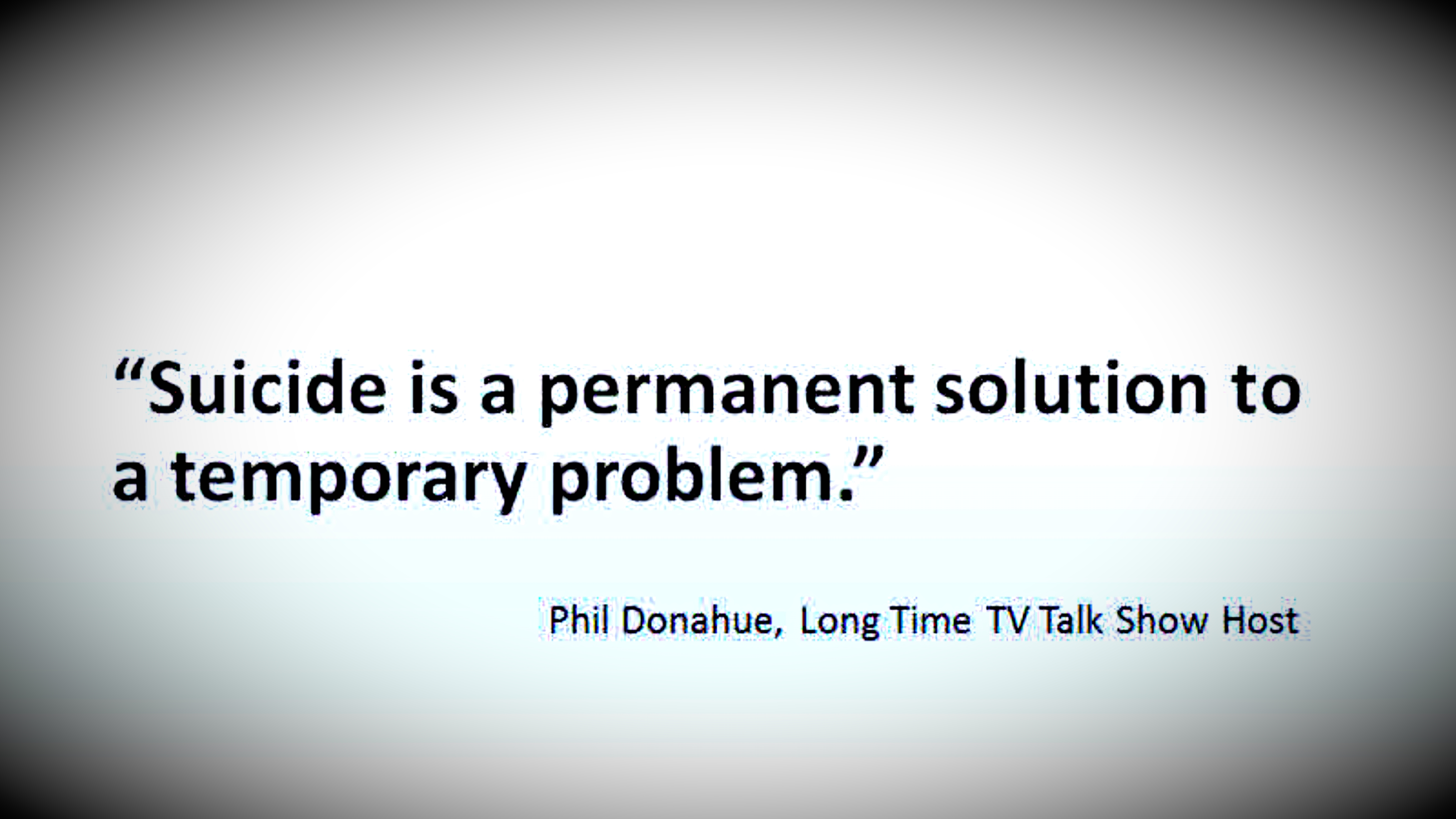
'The last thing you want to do is be accusatory or judgmental'

Hanna Webster - Pittsburgh Post-Gazette
If you or a loved one are having thoughts of suicide, call or text 988, or use the online chat option at 988lifeline.org/chat.
Suicide touches nearly all parts of the globe, with around 700,000 people dying from it every year. And some warning signs can be harder to spot than others.
Pennsylvania ranks lower than many other U.S. states for suicide rates, at 38th and with 13.9 suicide deaths per 100,000 people in 2021, per the Centers for Disease Control and Prevention, but rates remain steady for much of the U.S.
“A lot of progress has been made in the U.S. with an emphasis on suicide prevention,” said Richard McKeon, senior advisor of the Substance Abuse and Mental Health Services Administration’s (SAMHSA) 988 behavioral crisis office. “But we have not yet been able to decrease suicide nationally. The trend over the past 20 years has tragically been going up.”
Four years after the pandemic began, a mental health crisis continues across the country
The most important warning sign may not be any specific behavior, but rather a notable change, experts say.
“You want to be looking at recent changes in the norm,” said McKeon, who is also the former chief of suicide prevention at SAMHSA.
For instance, if your child is a good student and suddenly their grades start to fall for no apparent reason, or if they’re typically engaged at school but have dropped out of their extracurriculars, these can be signs of a mood disorder or someone who is thinking about suicide.
Suicidal ideation can be particularly tough to spot in teens, because it coincides with a time in their development when they naturally want to try new things, take risks and see their parents less often.
“Change isn’t inherently bad,” said Abigail Schlesinger, a child and adolescent psychiatrist at UPMC. “It’s if these changes are getting in the way of you succeeding, that’s a red flag.”
Here are some additional — and perhaps overlooked — signs to look out for.
Impulsivity, agitation or irritability
There’s been a debate in the field of suicide prevention about the contribution of impulsivity and recklessness to thinking and acting on suicide. For decades, impulsivity was thought of as a key marker of suicidal ideation, but more recent research suggests it may be more nuanced.
‘So many key points’: 3rd annual Black Mental Health Summit highlights importance of community
One 2020 study by Harvard and Columbia universities researchers found that, in the long term, impulsivity was not higher in those who attempted suicide versus those who thought about it.

Intention matters when thinking about the link between the two, said McKeon.
“Recklessness is certainly dangerous and risky,” he said. “But in essence, it’s not suicidal. One of the cardinal characteristics of suicide is that it’s intentional.”
This is part of the reason why experts look specifically to a person’s shifts away from the norm: Some people are naturally reckless or more impulsive than others.
“There’s research that shows that sometimes people act on suicidal thoughts within minutes, and this makes it appear impulsive,” he said. “In most of those instances, this was not the first time they thought about it.”
That being said, the emotional cousins of impulsivity — irritability and agitation — could signal that something is wrong. Look for signs of high anxiety and disregard for safety.
Increased substance use
An increase in substance use could be a sign of a change in behavior while at the same time decreasing inhibitions — and amping up irritability or impulsivity.
“Having your guard down might make it easier to act,” said Schlesinger. “We recommend reducing the things that might drop inhibition.”
Social isolation, changes in sleep
Is your loved one moving away from people who previously acted as their support system? Have they lost interest in activities that previously brought them joy? Have their eating and sleeping habits shifted dramatically?
These could all be flags of suicidal ideation.
“One of the best protectors is having someone close to you who can tell there’s been a change,” said Schlesinger.
Sleep changes on their own can compound other symptoms too.
“One of the signs people don’t think about a lot is sleep disturbances,” McKeon said. “Targeting sleep by itself may help,” because a lack of sleep can exacerbate negative emotions and render the body and mind less resilient.
Getting affairs in order
Selling possessions or discussing plans are a clear sign of suicidal ideation, or even of a plan for attempted suicide.
“It’s a no-brainer that that’s concerning,” said Schlesinger. “Especially if those things are important to them.”
But the most important red flag of suicidal ideation — although it may seem obvious — is whether the person has expressed intent.
“Nothing is as important as what the person themself has to say,” McKeon said.
The problem is, Americans in particular aren’t great at asking about or discussing suicidal ideation. Stigma still exists around the topic, which leads many to keep such thoughts to themselves. And it can keep loved ones from bringing up the topic.
This exists on a systemic scale too. McKeon highlighted a study in which researchers sought to implement universal screening for suicide in health care settings by asking each patient who visited emergency rooms if they had thoughts about suicide, regardless of what they visited the ER for.
“The research shows that asking everyone in the ER led to a doubling of identification of suicidal people,” said McKeon. “And many who were further identified were at equivalent risk than those who visited the hospital for suicide.”
Around 2008, SAMHSA instated a universal screening requirement for everyone who called its hotline, which was shortened from a 1-800 number to simply 988 a little over two years ago.
And 988 is not just for individuals in crisis, said McKeon. It can also be for loved ones who don’t know how to talk to their kid, friend or relative about suicide.
How and when to talk about it
Schlesinger recommends talking about mood, emotions and suicide early with kids to give them a template and a foundation if those feelings arise in them later.
“I think a lot of families are scared to have that conversation, but it’s really important to recognize that you can start it young,” she said.
Coming up with a shared plan of action if your child starts having suicidal thoughts can reduce the steps it takes for them to come to you. Schlesinger also recommends letting them know it doesn’t have to be the parent: The child can go to another trusted adult, like a teacher, mentor or relative.
“It’s a lot easier to talk about it if you’ve already had the conversation,” she said. “There’s less shame around it if they have the words and know how to use them.”
Approach matters too, said McKeon.
“The last thing you want to do is be accusatory or judgmental,” he said. “What’s important is not only the words, but the way in which the question is asked.”
Resources
In addition to 988’s call, chat and text options, additional resources include:
AgriStress Helpline (support for agricultural communities): 833-897-2474; agrisafe.org
Crisis Text Hotline: Text “HOME” to 741741; crisistextline.org
Get Help Now Hotline (for substance use disorders): 1-800-662-4357
resolve Crisis Services 24-hour counseling line: 1-888-796-8226
Trans Lifeline: 877-565-8860; translifeline.org
The Trevor Project Lifeline (for LGBTQ+ young people under 25): 1-866-488-7386?, text “Start” to 678-678, or ?online chat
Veteran Crisis Line: Dial 988, then press 1; online chat option at veteranscrisisline.net
#James Donaldson notes:
Welcome to the “next chapter” of my life… being a voice and an advocate for #mentalhealthawarenessandsuicideprevention, especially pertaining to our younger generation of students and student-athletes.
Getting men to speak up and reach out for help and assistance is one of my passions. Us men need to not suffer in silence or drown our sorrows in alcohol, hang out at bars and strip joints, or get involved with drug use.
Having gone through a recent bout of #depression and #suicidalthoughts myself, I realize now, that I can make a huge difference in the lives of so many by sharing my story, and by sharing various resources I come across as I work in this space. #http://bit.ly/JamesMentalHealthArticle
Find out more about the work I do on my 501c3 non-profit foundation
website www.yourgiftoflife.org Order your copy of James Donaldson's latest book,
#CelebratingYourGiftofLife: From The Verge of Suicide to a Life of Purpose and Joy

www.celebratingyourgiftoflife.com
Link for 40 Habits Signup
bit.ly/40HabitsofMentalHealth
If you'd like to follow and receive my daily blog in to your inbox, just click on it with Follow It. Here's the link https://follow.it/james-donaldson-s-standing-above-the-crowd-s-blog-a-view-from-above-on-things-that-make-the-world-go-round?action=followPub

https://standingabovethecrowd.com/james-donaldson-on-mental-health-signs-of-suicidal-ideation-how-and-when-to-approach-a-loved-one/


No comments:
Post a Comment